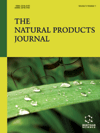
Full text loading...
We use cookies to track usage and preferences.I Understand
An important determinant of population health is the caliber and quality of food that can directly affect the health of the population. Herbs and spices are now the primary ingredients in the global food and nutraceutical industry. Traditional methods for extraction of active metabolites of herbs and spices may lead to lowered extraction efficiency due to high solvent consumption and a longer extraction period. These issues can be resolved by the use of novel green and sustainable extraction techniques. The present paper aims to discuss innovative extraction and identification techniques for herbs and spices. Microwave-aided extraction (MAE), ultrasound-assisted extraction (UAE), supercritical fluid extraction (SFE), DNA barcoding, THz-S, e-nose, near-infrared (NIR) spectroscopy, hyperspectral imaging, Raman spectroscopy possess environment-friendly instrumentations, make lesser use of chemicals, and reduce the consumption of solvent. The use of cutting-edge technology in place of outdated ones can improve product quality and help the general public maintain high levels of health.

Article metrics loading...

Full text loading...
References


Data & Media loading...

